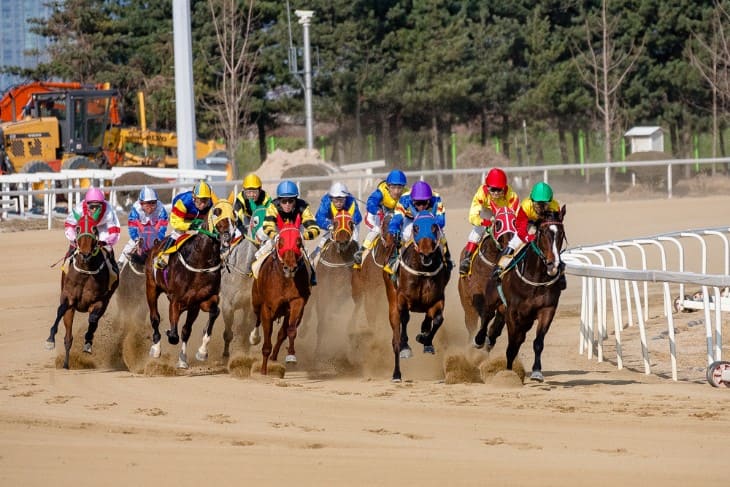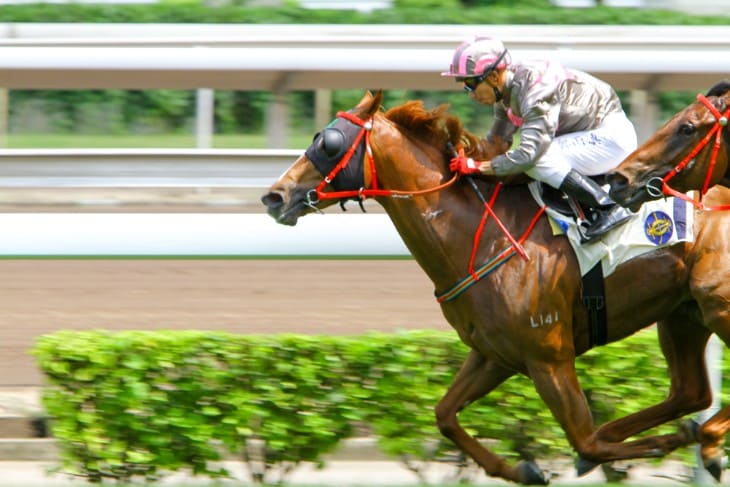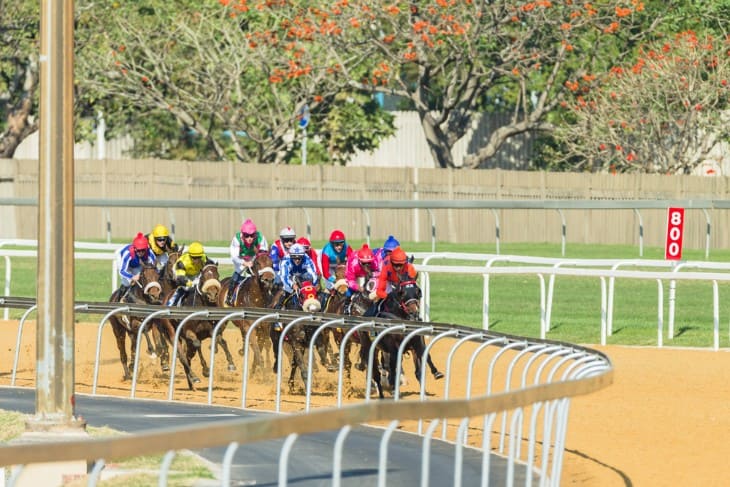- The Training and Dedication of National Hunt Jockeys
- Iconic National Hunt Races in Great Britain
- Breeding for Excellence: The Science Behind National Hunt Horses
- The Thrill and Peril: Understanding the Risks
- Distinguished Racecourses in Great Britain and Their Unique Challenges
- The Role of Tradition and Ceremony in National Hunt Racing
- Conclusion
The season for National Hunt racing in Great Britain runs primarily through the colder months, from October to April. This scheduling contrasts with flat racing and allows the sport to captivate its audience with thrilling winter spectacles. Races vary in distance and type, including hurdles, steeplechases, and handicap races, each presenting different challenges. Hurdles are lower obstacles, fostering speed and agility, while steeplechases feature higher fences, demanding greater jumping skill and stamina. This variety ensures that National Hunt racing offers something for every enthusiast, from the casual spectator to the dedicated follower.
National Hunt racing is defined by several key elements that contribute to its unique character and enduring popularity:
- Types of Races: National Hunt racing encompasses several types of races, each with its distinct characteristics.
- Hurdles: Races that involve jumping over barriers not less than three and a half feet high. These races test the speed and agility of the horses.
- Steeplechases: Featuring higher obstacles, including open ditches and water jumps, steeplechases challenge the horses' jumping prowess and endurance.
- Bumpers: Flat races without any obstacles, designed as an introduction for horses new to National Hunt racing.
- Classifications of Races: Races are classified into different grades and classes, indicating the level of competition and prize money.
- Grade 1 races: The highest level, attracting the best horses and offering the most significant prize money.
- Handicap races: Horses carry different weights based on their past performances to level the playing field.
- Seasonality: The season plays a crucial role in the National Hunt calendar, with the most prestigious races taking place during the winter months. This timing not only distinguishes it from flat racing but also adds an element of unpredictability with variable weather conditions.
The combination of these elements ensures that National Hunt racing remains a dynamic and thrilling component of British sports culture. Each race is a testament to the skill, courage, and perseverance of the jockeys and their equine partners, making National Hunt racing a much-loved tradition.
The Training and Dedication of National Hunt Jockeys
The role of jockeys in National Hunt Racing is pivotal, demanding not just exceptional riding skills but also a deep understanding of each horse's abilities and temperament. Jockeys spend countless hours training, both on and off the track, to hone their skills and build a rapport with their mounts. This preparation is crucial, as the demanding nature of National Hunt races requires jockeys to make split-second decisions that can mean the difference between victory and defeat. Their training regimen includes physical fitness to improve strength and endurance, as well as tactical studies to strategise race plans effectively.
Moreover, jockeys must possess an intricate knowledge of the racecourses they compete on, each of which presents its unique challenges. Understanding the nuances of each track, from the placement of jumps to the type of ground, is essential for planning how to tackle the course. This level of dedication underscores the jockey's role not just as a rider but as a strategist and athlete, capable of guiding their horse through the rigours of a National Hunt race. The bond between jockey and horse is foundational, built on trust and mutual respect, enabling them to navigate the complexities of the sport together.

Iconic National Hunt Races in Great Britain
Great Britain is home to some of the most iconic National Hunt Racing events, attracting participants and spectators from across the globe. These races are celebrated for their history, prestige, and the incredible test they pose to horse and rider alike.
- The Cheltenham Festival: Held annually in March, this festival is a pinnacle of National Hunt racing, featuring a variety of races, including the famous Gold Cup. The event draws the best talent from the racing world, offering four days of high-stakes competition.
- Gold Cup: The premier event of the festival, known for its challenging course and illustrious history.
- Queen Mother Champion Chase: A showcase of speed and agility over shorter distances.
- The Grand National: Taking place at Aintree Racecourse, this is perhaps the most well-known National Hunt race in the world. The Grand National is renowned for its difficulty, with longer distances and larger fences than any other National Hunt race.
- Becher's Brook and The Chair are among the notable obstacles that have contributed to the race's reputation for toughness and unpredictability.
- The King George VI Chase: Hosted at Kempton Park on Boxing Day, this race is a highlight of the National Hunt season, featuring some of the best chasers competing over three miles.
These races not only provide thrilling entertainment but also contribute significantly to the cultural fabric of British equestrian sport. They are moments when the passion for National Hunt Racing unites everyone involved, from the trainers and jockeys to the enthusiastic spectators cheering from the stands. Each event, with its unique characteristics and challenges, encapsulates the spirit and tradition of National Hunt racing, making it an enduring and beloved part of the British sporting calendar.
Breeding for Excellence: The Science Behind National Hunt Horses
The breeding of horses for National Hunt Racing is a meticulous science, aimed at producing athletes capable of excelling in the demanding conditions of the sport. Success in National Hunt racing requires horses with a unique combination of speed, stamina, agility, and jumping ability. Breeders pay close attention to these traits, carefully selecting sire and dam lines that are likely to produce offspring with the desired characteristics.
- Genetic Traits: Important attributes for National Hunt horses include:
- Stamina and Endurance: Essential for the longer distances of National Hunt races.
- Jumping Ability: A key skill for navigating the hurdles and fences encountered in races.
- Training and Development: Young horses undergo extensive training to prepare them for the challenges of National Hunt racing.
- Early Training: Focuses on building strength and conditioning, as well as introducing the horse to jumping.
- Race Training: Tailored to develop the horse's racing skills, including speed work and advanced jumping techniques.
Breeding strategies are complemented by advanced veterinary care and training methodologies, ensuring that horses reach their full potential. The goal is to nurture each horse's innate talent, supported by a regimen that promotes physical and mental well-being. This comprehensive approach to breeding and training underscores the dedication to excellence that defines National Hunt racing, ensuring the sport continues to thrive and captivate audiences with its unique blend of challenge and competition.
The Thrill and Peril: Understanding the Risks
The inherent risks of National Hunt Racing are well-documented, with the sport's demanding nature posing significant challenges to both horse and rider. The high-speed races, combined with the need to jump over hurdles and fences, increase the potential for falls and injuries. Recognising and mitigating these risks are paramount to the organisers and participants of National Hunt events.
- Safety Measures: Over the years, substantial efforts have been made to enhance safety in National Hunt racing.
- Track Design and Maintenance: Courses are carefully designed and maintained to ensure the safety of jumps and to minimise the risk of injury.
- Protective Gear: Jockeys wear safety helmets and body protectors, while horses are equipped with protective boots to guard against injury.
- Veterinary Care and Oversight: The welfare of the horses is a top priority, with veterinary teams on hand to provide immediate care if needed.
- Pre-race Checks: Horses undergo thorough examinations to ensure they are fit to race.
- Post-race Care: Immediate attention and care are provided for any horse that sustains injuries during a race.
Despite the risks, the thrill of the competition and the deep love for the sport drive jockeys, trainers, and horses to participate in National Hunt racing. The commitment to safety and animal welfare remains a crucial aspect, with continuous improvements being made to protect all involved.

Distinguished Racecourses in Great Britain and Their Unique Challenges
Great Britain is home to several distinguished racecourses that host National Hunt Racing, each with its unique set of challenges and characteristics. These courses are celebrated not only for their historical significance but also for the diverse and demanding nature of their tracks, which test the skill and agility of the participating horses and jockeys.
Cheltenham Racecourse is perhaps the most famous National Hunt venue, renowned for the Cheltenham Festival. The course's undulating terrain, stiff fences, and the famous uphill finish provide a rigorous test of stamina and jumping ability. The atmosphere at Cheltenham, especially during the Festival, is electrifying, with spectators and participants alike drawn to the spectacle and challenge of the races.
Aintree Racecourse, the home of the Grand National, features some of the most challenging jumps in the world, including Becher's Brook and The Chair. These obstacles require precise timing and bravery from both horse and rider, contributing to the race's reputation as one of the most demanding and prestigious in National Hunt racing. The course's history and the sheer test of endurance and skill it presents make it a central figure in the National Hunt calendar.
Each of these courses, with their unique challenges and storied pasts, plays a pivotal role in the allure and enduring popularity of National Hunt racing in Great Britain. They not only test the mettle of the competitors but also contribute to the rich tapestry of the sport, drawing fans from around the world to witness the drama and triumph of National Hunt racing.
The Role of Tradition and Ceremony in National Hunt Racing
Tradition and ceremony play significant roles in the culture of National Hunt Racing, enriching the experience for participants and spectators alike. Many races and meetings are steeped in history, with rituals and customs that have been observed for generations. These traditions contribute to the unique atmosphere of National Hunt events, connecting the present day with the sport's rich heritage.
The presentation of colours, the weighing of jockeys, and the parade of horses before a race are all ceremonial elements that enhance the spectacle and anticipation of the event. Additionally, the award ceremonies that follow each race not only celebrate the achievements of the winners but also honour the sport's history through trophies and prizes that often have their own storied pasts.
This blend of tradition and ceremony is a fundamental aspect of National Hunt racing's appeal, providing a sense of continuity and belonging among the racing community. It underscores the respect for history and tradition within the sport, while also celebrating the achievements and progress of its participants. The ceremonies and rituals observed at National Hunt events serve as a reminder of the sport's enduring legacy and its continued relevance in the modern sporting landscape.
Conclusion
In conclusion, the appeal of National Hunt Racing lies not only in its thrilling races and challenging courses but also in its rich history, cultural significance, and the continuous evolution of the sport through technological innovations. From the dedication of the jockeys and trainers to the enthusiasm of the spectators, National Hunt racing remains a beloved part of the British sporting landscape.
The sport's ability to adapt and grow, while still honouring its traditions, ensures its continued popularity and relevance. As National Hunt racing looks to the future, it carries with it the legacy of its past, promising to remain a fixture of British culture and equestrian excellence for generations to come. The ongoing commitment to safety, welfare, and the enhancement of the spectator experience will undoubtedly keep the spirit of National Hunt racing alive, captivating and inspiring all who are drawn to this remarkable sport.








